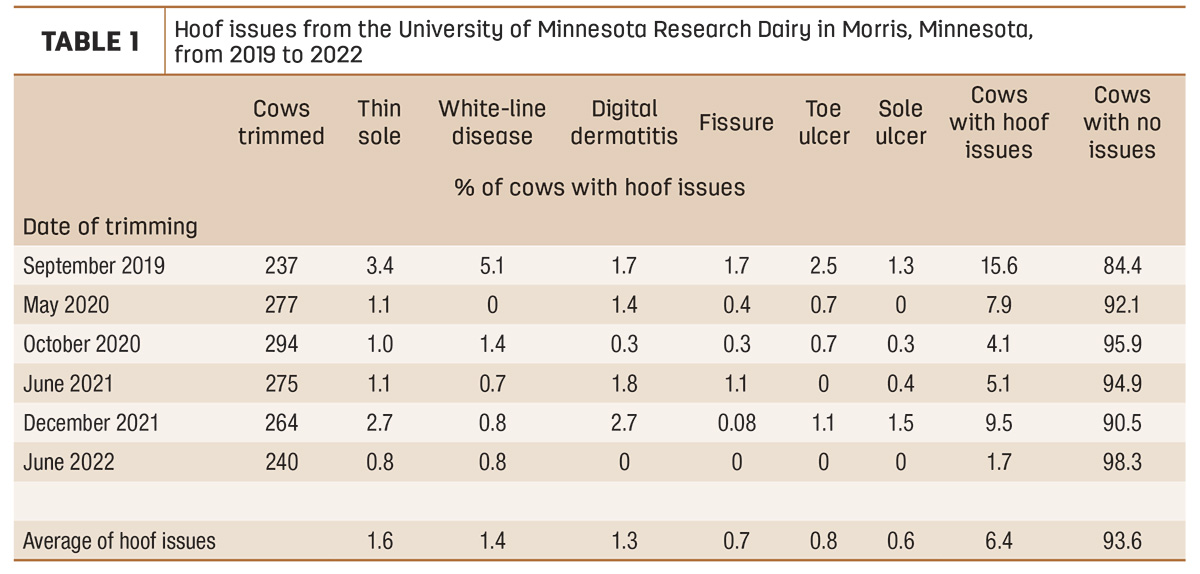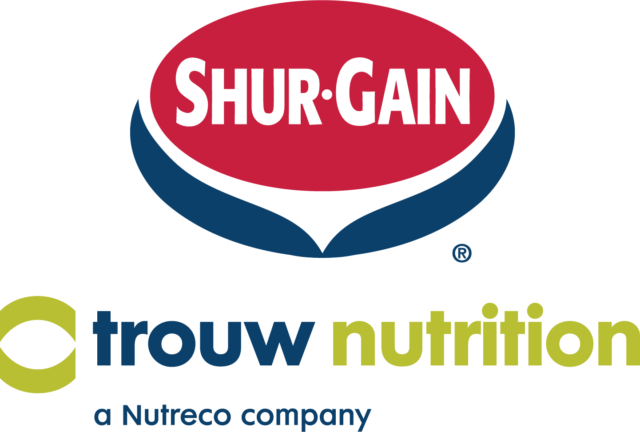Lameness is one of the costliest disorders of dairy cattle, even in a grazing dairy herd. Yet, many grazing dairy cattle are not part of a routine hoof trimming schedule because there is an old adage that grazing dairy cattle do not need to have their hooves trimmed as they wear them down while walking on pasture. The thought is that as cows walk in pasture and cow lanes every day, they can wear their hooves down and maintain proper hoof length. However, in the northern U.S., most grazing herds are confined during the winter because of snow and cold weather and are fed stored feeds and a total mixed ration (TMR).
Hoof trimming for grazing herds is very important, and farmers must change their mindset with regards to trimming grazing herds.
To ensure excellent hoof health, hoof trimming of grazing dairy cattle is an important area of farm management. If hooves are not maintained, lameness results, which can decrease milk production and reduce the welfare of grazing dairy cows.
At the University of Minnesota West Central Research and Outreach Center (WCROC) in Morris, Minnesota, it has become evident why hoof trimming is important in managing grazing dairy herds.
The WCROC has a dairy operation that milks 275 cows twice daily and is representative of a mid-size Midwestern dairy farm. The cows are split between a conventional grazing herd and a certified organic grazing herd. Treatment options are limited with the organic dairy herd, so developing a hoof trimming schedule is of utmost importance.
Until 2019, hoof trimming was always an afterthought on the WCROC dairy, which is common on many farms. Typically, cows were only trimmed if it was evident they needed attention, such as long hooves, as well as those close to dry-off or dry. In total, about 90 cows were trimmed every year.
During the spring of 2019, disaster almost hit the dairy farm.
It was very rainy, which resulted in a lot of cows walking through the mud to pastures. This can be very typical in a lot of grazing dairy herds in the spring, depending on the weather. However, because of the excessively wet weather, there were a lot of cows lame with many hoof issues. In the 180-cow conventional grazing herd, 38 cows were treated from April to August of 2019 for hoof issues, and antibiotics were administered more frequently. The organic herd also had many hoof issues, but fixing those incidences was more difficult without the use of antibiotics.
The farm sacrificed a lot of production with the cows that spring, which reduced farm profitability. As a result, a six-month maintenance trimming schedule was developed.
In September of 2019, every cow in the herd was trimmed over a two-day period. Hoof issues were recorded and continued to be recorded for the following three years, as shown in Table 1. The table shows the percentage of cows with hoof issues for every six-month trimming. For the first trimming, over 15% of the herd had a hoof issue. There were a lot of cows with thin soles, white-line disease, fissures, toe ulcers and sole ulcers, as well as a few cows with digital dermatitis, but those cases were not severe.
 Thin soles are usually observed in cows whose hooves are exposed to wet, muddy conditions and in cows that walk long distances. Because grazing cattle often walk long distances from pastures to milking parlors or barns, the prevalence of thin soles may be higher than observed in confinement cows. Cows that have thin soles usually have a slow and painful walking motion and are considered lame.
Thin soles are usually observed in cows whose hooves are exposed to wet, muddy conditions and in cows that walk long distances. Because grazing cattle often walk long distances from pastures to milking parlors or barns, the prevalence of thin soles may be higher than observed in confinement cows. Cows that have thin soles usually have a slow and painful walking motion and are considered lame.
White-line disease is lesions that affect the sole and the wall of the claw. It is one of the most common lesions in grazing dairy cattle, and these may appear as hemorrhages, separations of the hoof and abscesses. Sole or toe ulcers are severe hemorrhages and are very painful for cows.
Since the routine hoof trimming schedule was implemented, some of these hoof issues have been reduced in the herd. Thin soles and white-line disease are down to 1% of cows, and the percentage of cows with hoof issues has been reduced to less than 2%. The data from each trim is recorded in PCDART software, and antibiotic use for hoof health issues is also tracked.
So how was the prevalence of many of the hoof issues reduced? It was quite simply achieved with a proper maintenance trimming schedule of every six months for every cow, both lactating and dry. This maintenance trimming might cost the farm more on trimming day, but it saves the farm money in the long run with reduced vet bills and increased milk production and welfare. It also brings satisfaction to all workers at the farm that they do not have to deal with many hoof issues in the cows anymore.
Every grazing dairy herd should be on a schedule to trim all cows twice per year. Records of all trimmings should be recorded to ensure all cows are trimmed and to track any hoof issues. It is important to work with a hoof trimmer to determine each farm’s schedule and to ensure that all cows are trimmed correctly.
At WCROC, cows are trimmed just before the start of the grazing season each year and once when they are in winter confinement conditions.
Normal hoof trimming can reduce or prevent lameness in grazing dairy cattle and improve longevity of cows, as well as productivity and profitability. Now is the time to work with your hoof trimmer to develop a maintenance trimming schedule. Why wait?







